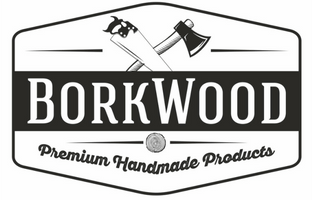Asset Tokenization: Transforming Ownership And Investment
Asset tokenization is revolutionizing the way we own, trade, and invest in assets. By converting tangible and intangible assets into digital tokens on a blockchain, this technology enhances liquidity, accessibility, and security. From real estate and fine art to venture capital and personal achievements, tokenization is opening up new financial opportunities across industries.
This article explores what asset tokenization service is,how it works, its advantages and limitations, and real-world applications that illustrate its transformative potential.
Understanding asset tokenization
Asset tokenization refers to the process of digitizing assets and converting them into blockchain-based tokens. These tokens can represent fractional ownership, making it possible to trade assets more efficiently. Instead of one asset equating to a single token, assets are typically divided into multiple tokens, allowing for partial ownership and broader market participation.
The process often involves a Security Token Offering STO, where asset-backed tokens are issued through a blockchain platform. Investors can then purchase these tokens, which are stored and traded on a secure digital ledger.
Key benefits of asset tokenization
Increased liquidity
Traditionally illiquid assets like real estate, fine art, and collectibles can be easily traded as tokenized assets.
Enhanced security
Blockchain technology ensures secure and immutable transactions.
Greater transparency
Every transaction is recorded on the blockchain, providing a verifiable history of asset ownership.
Fractional ownership
Investors can buy and sell portions of high-value assets, lowering the entry barrier to investment.
Lower costs
By eliminating intermediaries, transaction costs are significantly reduced.
Faster transactions
Blockchain technology enables near-instant transfers and settlements.
Real-world applications of asset tokenization
Finance
Many financial institutions are integrating asset tokenization into their operations. For instance, crowdfunding platforms now use tokenization to democratize investment opportunities. Platforms like Securitize and TaoDust facilitate the issuance and trading of security tokens, helping startups and businesses raise capital efficiently.
Real estate
Tokenization is reshaping real estate investment by enabling fractional ownership. The St. Regis Aspen Resort was among the first properties to be tokenized, with investors purchasing digital shares in the luxury hotel. Similarly, AnnA Villa in Paris became the first real estate asset in France to be sold via blockchain transactions.
Precious metals
Gold and silver tokenization is gaining traction, allowing investors to trade asset-backed tokens linked to real-world commodities. Examples include DGX, PMGT, and XAUt, which enable secure and seamless trading of tokenized precious metals.
Art and collectibles
Fine art is now more accessible thanks to blockchain-based investment platforms. Maecenas, for example, allows investors to own fractional shares of valuable artworks. NFTs Non-Fungible Tokens have also surged in popularity, with pieces like “The Merge” by Pak selling for millions.
Sports and entertainment
Sports teams and musicians are leveraging tokenization to engage fans and secure funding. FC Barcelona, for instance, launched NFTs to support environmental initiatives, while artists like Redfoo use blockchain-based platforms to sell tokenized shares of their music rights.
Ecology and sustainability
Tokenization is contributing to environmental efforts as well. Projects like Plastic Bank issue impact tokens to incentivize plastic waste collection, helping both the planet and low-income communities. Similarly, carbon credit tokenization is improving the efficiency and transparency of carbon offset trading.
Personal tokenization
Individuals are even tokenizing themselves as a means of raising funds. Blockchain entrepreneur Alex Masmej launched his personal token, $ALEX, offering investors a share of his future earnings in exchange for financial backing.
Challenges and considerations
Despite its advantages, asset tokenization faces several challenges:
Regulatory uncertainty
Many jurisdictions lack clear regulations for digital assets and security tokens.
Technological barriers
Developing secure and scalable blockchain solutions requires expertise.
Market adoption
While growing, tokenization is still in its early stages, requiring wider acceptance.
Valuation complexities
Pricing tokenized assets fairly can be difficult, especially for unique items like art or collectibles.
Conclusion
Asset tokenization is reshaping global markets, offering unparalleled opportunities for investment, ownership, and financial inclusion. Whether it’s tokenizing real estate, fine art, or even personal achievements, blockchain technology is unlocking new possibilities. However, challenges remain, particularly in regulatory compliance and market adoption.
As the landscape evolves, businesses and investors who embrace asset tokenization will be well-positioned to capitalize on its potential. The future of digital assets is here are you ready to explore it?







